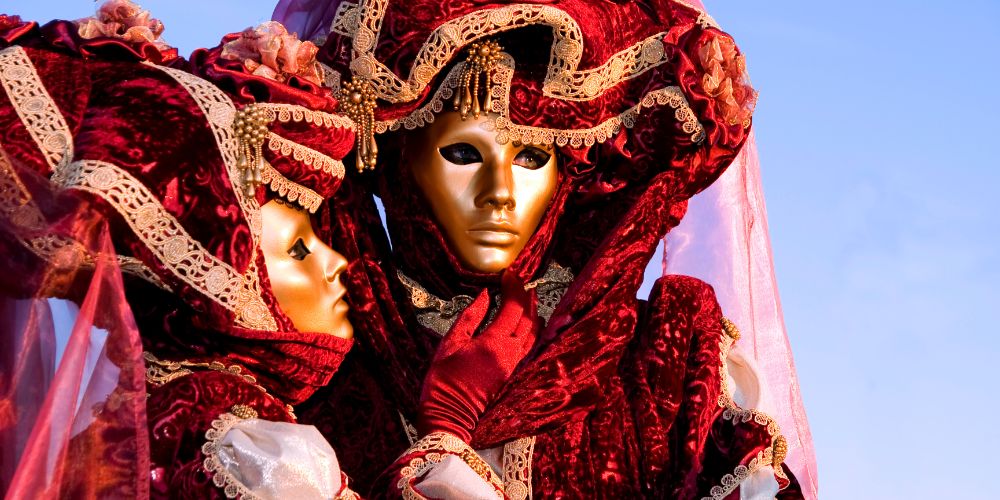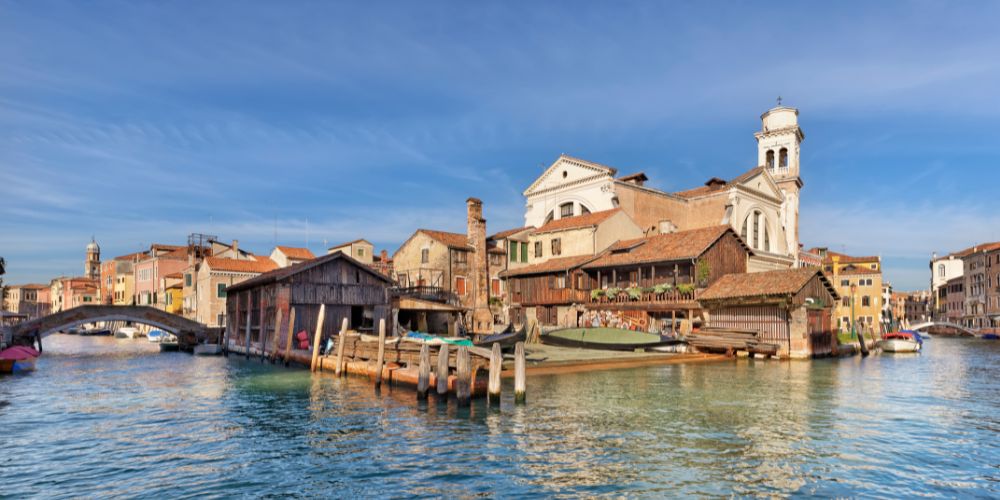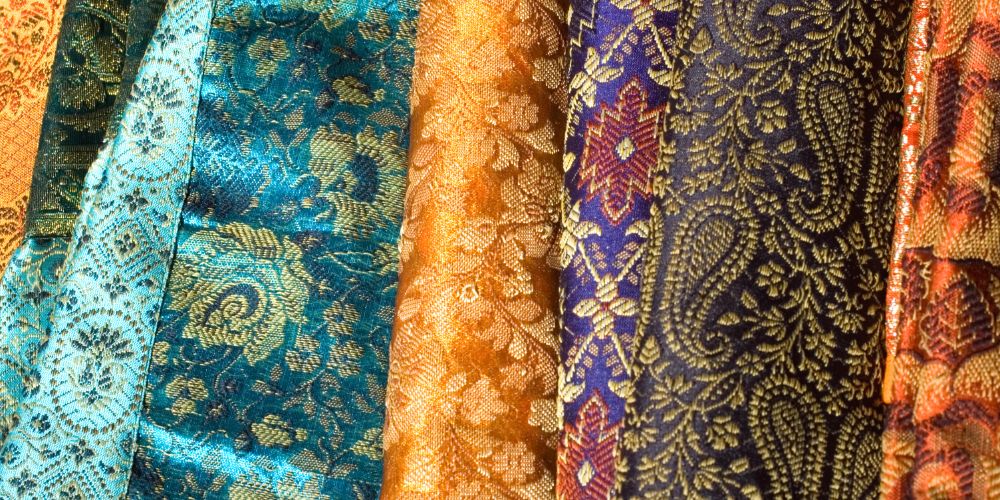Among antique prints, mosaics and mirrors, fine textiles and the wood of boats: craftsmanship in Venice shines among ancient and unknown crafts.
Next time you go to Venice, don't follow the streets you know, but try new ones: you'll be delighted to discover a web of ateliers that bring to life every day the sophistication and skill of Venice's craftsmanship.
At work you will find artisans devoted to crafts you know and others that may be unknown to you. On this tour, you will discover the hidden faces behind the solemn festivals of the ancient Serenissima. You will get to know those who has been producing masks, glass wonders, even gondolas and the oldest prints for centuries.
This lesser-known Venice is sure to leave you speechless.
Tour among the artisans of Venice: 5 experiences to live just here

So let us now begin our journey to discover what makes Venice the city of Venetians.
We will discover that between past and present, many crafts have acquired the flavor of folklore, while others have remained more alive than ever.
After all, we always have told you so: beyond the luxury and glitter, what makes Venice an invaluable heritage is its people. Those Venetian artisans who, behind the scenes of the most triumphant festivities, work tirelessly for their city. Let's discover them together.
1. The artisans of Venetian masks: the art of Mascareri and Targheri

Even those who hastily stroll through the streets of the center cannot remain indifferent to the windows of mascareri, always plastered with masks. Mascareri and targheri are in fact among the most famous artisans in Venice. They are literally the makers of masks and papier-mâché shields, one of the oldest crafts of the Serenissima.
As early as the 13th century we read about this craft in official documents, but it was not until the 15th century that the art of mask-making became extremely popular. In fact, masks became in use during the legendary Carnival of Venice.
So here it was that in order to protect their craft in 1436, at the time of Doge Foscari, these artisans endowed themselves with mariegola, in other words a statute, which is still preserved in the halls of the State Archives.
The plague doctor, the Bauta, or all the characters of the Commedia dell'Arte: one cannot be enraptured by the wealth of detail that adorns these fine products of Venetian craftsmanship.
There are some everywhere in Venice, and every now and then, if you pay attention, you might even see an artisan at work...
With the VenicePass, then, the visit becomes an experience at the Bottega dei Mascareri.
3. Artisans specialized on Venetian waters: Squeraroli and Remèri

While perhaps not everyone has heard of squeri and squeraroli, the product of their incredible art is known even to those who have never been to Venice. Every rowing boat that plies Venetian waters, including gondolas, in fact, was made inside a squero. Not just gondolas, however: also pupparini, sandoli, s'ciopóni and every small and medium-sized Venetian boat.
Not many have survived the passage of time. If you get off the beaten tourist track, however, it is not so rare to encounter one and perhaps see a shipwright at work.
Some squeri organize tours, during which visitors can set foot inside these shipyards and watch the masters at work. One of the last squeri still active, one of the most famous and oldest, is located in the Sestiere of Dorsoduro, not too far from the Fondamenta delle Zattere.
Of the remèri we perhaps hear even less often, yet they are one of the cornerstones of craftsmanship in Venice. One of the oldest crafts in the Serenissima that allows the making of oars (made by the remèr) and forcole (made by the forcolai). The latter are the supports on which the oar is pivoted to row Venetian boats.
This craft was as important as difficult, and here too it required a mariegola, or statute (compiled in 1307). Even of oarsmen there are not that many left. A few workshops survive today of this ancient art, which, from generation to generation, tell visitors their precious secrets.
2. The artisans of glass, beyond glass blowing

When people talk about craftsmanship in Venice, normally the furnaces of Murano first come to mind. Anyone who has the chance to see a glass artisan at work is enchanted by the skill with which, in just a few moments, he transforms a shapeless mass into an art object.
Normally, it is precisely the blown glass that catalyzes much of the attention. Yet, the art of glass in Venice has developed in so many different forms.
We also talk about the art of 24K gold leaf mosaic, Venetian enamels used to embellish creations that were an inspiration even for Gaudi and the Sagrada Familia. We are talking about marvelous Venetian mirrors that precisely between the 15th and 16th centuries began to be made in the most exquisite crystal. So splendid that they were in demand everywhere and gave rise to the guilds of Venetian mirror-makers.
And thanks to glass, craftsmanship exploded in Venice in further forms: from majestic glass sculptures to the tiny details that embellish jewelry. Murrine, so reminiscent of the ancient pearls of the Orient, were actually born among the incandescent furnaces of Venice.
To learn more about the history of this art and its craftsmen, don't forget that Murano is home to a very in-depth museum: the Glass Museum, included among the attractions of the VenicePass.
4. Among the artisans of ancient prints and bookbindings
Venice is known for the many fascinating bookstores, more or less rich in folklore, that are scattered throughout the city. In addition to the beauty of these places, there is a wonderful underground of ancient print shops that tell of a glorious past and a precious present.
When movable type printing was invented in 1450 by Gutenberg, not many people know that among the first cities to adopt a printing press was Venice. It was the ninth city in Europe, to be exact, and the first book, a work by Cicero, was printed only in 1469 by brothers Johann and Wendelin von Speyer.
Within a very few years, dozens of printing houses opened in Venice: an estimated 150, compared to about 70 in cities such as Paris. The 16th century, then, opened as a golden season for the Venetian printing press, which emerged as the first in Europe. Publishers of the caliber of Manuzio, Francesco Marcolini, Giunti and Giovanni Giolito de' Ferrari would make this art famous everywhere.
In the 20th century, this precious form of craftsmanship will find new impetus in Venice, thanks to the cultural and stylistic synthesis between Venetians and Armenians, many of whom will find refuge in the city following the diaspora. Eminent testimony to this is the Antica Stamperia Armena, which is still in operation today according to ancient rules. A visit to this place is included in the VenicePass.
5. Handicrafts from the East, including silk and beautiful fabrics

Long before the Polo brothers returned from the East with their cargo of silk and spices, Venice had learned the art of silk-making precisely from Greek artisans.
At the end of the 14th century, in addition to silk, among the most sought-after precious fabrics was velvet, often decorated with color combinations reminiscent of oriental vibrancy. It was precisely with "counter-cut" velvet, a Venetian specialty, that the stoles of procurators and senators of the Republic were created.
Both silk and velvet production were subject to strict controls, both on the fabric and the colors used. Scarlet, also called Venetian red, for example, was produced according to techniques kept strictly secret.
Damasks, silks, velvets, and brocades experienced more difficult periods between the eighteenth and nineteenth centuries, only to return of interest today thanks to the craftsmanship of a few artisanal companies that still operate in Venice.
Venice is a treasure chest of ancient arts, which have reinvented themselves over the centuries, leaving you, dear visitor, with the beautiful task of continuing to bring them to life for several centuries.










Lascia un commento